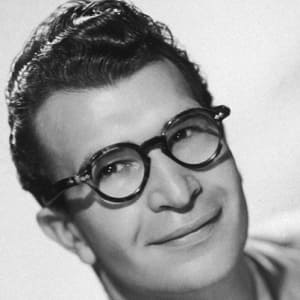
Lionel Barrymore
Head of the famous Barrymore acting family, Lionel Barrymore was one of the most important character actors of the early 20th century.
Synopsis
Born in Philadelphia, Pennsylvania, on April 28, 1878, Lionel Barrymore is known for a long line of outstanding screen roles, including in the films The Mysterious Island and A Free Soul, for which he won an Academy Award. He went on to appear in Grand Hotel, Captains Courageous, Duel in the Sun and Key Largo. Barrymore was also a radio actor, composer, painter and author. He died in Van Nuys, California, on November 15, 1954.
Background
The oldest son in a noted acting dynasty, Lionel Barrymore was born Lionel Herbert Blythe on April 28, 1878, in Philadelphia, Pennsylvania. His parents, Maurice and Georgina Drew, who used "Barrymore" as their stage name, were unapologetic about getting their children to follow in their footsteps. Lionel's younger siblings, Ethel and John Barrymore, also went on to have successful stage and film careers.
At first reluctant to take the stage, Barrymore, who'd first appeared in plays with his parents as an infant, had semi-regular work by his late teens, even appearing with his grandmother, well-known actress Louisa Drew, in a handful of stage productions.
Film Career
After stepping away from acting to pursue painting, Lionel Barrymore returned to the craft and eventually hooked up with director D.W. Griffith to work in the new medium of film. Over the next several years, Barrymore starred in a number of silent works, including The Battle (1911), The New York Hat (1912) and His Secret (1913)—which also marked Barrymore's directorial debut.
Barrymore also continued to perform on stage, starring in several Broadway productions. That would soon change, however: In 1925, Barrymore moved to Hollywood, California, and signed a deal with a MGM. Over the next two decades, the actor would be widely regarded as one of film's biggest stars. He earned an Academy Award nomination for his directorial work on Madame X (1929) and, two years later, won a Best Actor Oscar for his performance in A Free Soul (1931).
A man of many talents, Barrymore composed the music for the romantic period drama Glorious Night (1929), a film that he also directed. In the years that followed, he landed starring roles in hits such as Grand Hotel (1932), Dinner at Eight (1933) and You Can't Take it With You (1938).
By the late 1930s, severe arthritis had led Barrymore to be confined to a wheelchair. His physical state was incorporated into his new roles, most notably as Dr. Gillespie in Young Dr. Kildare (1938), which spawned a dozen sequels—all of them starring Barrymore.
In 1946, Barrymore played the despicable and wheelchair-bound Henry Potter in the Frank Capra holiday classic It's a Wonderful Life, also starring Jimmy Stewart and Donna Reed. Two years later, Barrymore teamed up with Humphrey Bogart and Lauren Bacall in the thriller Key Largo (1948).
In addition to his film and stage work, Barrymore entertained radio listeners each year with his interpretation of Ebenezer Scrooge in the Charles Dickens classic A Christmas Carol.
Barrymore continued to stay busy well into his 70s, appearing in his final film, the musical comedy Main Street to Broadway, in 1953.
Personal Life and Legacy
Lionel Barrymore was married twice. With his first wife, Doris Rankin, he had two daughters, neither of whom lived beyond infancy. The couple later divorced. Barrymore's second wife, Irene Fenwick, died in 1936.
On November 15, 1954, Barrymore, who'd been suffering heart problems, died at Valley Hospital near his home in Van Nuys, California. Toward the end of his life, Barrymore estimated that his family of actors had appeared on stage and in film for 200 consecutive years. The family tradition has continued since his death, most notably with his great niece, contemporary film star Drew Barrymore.




